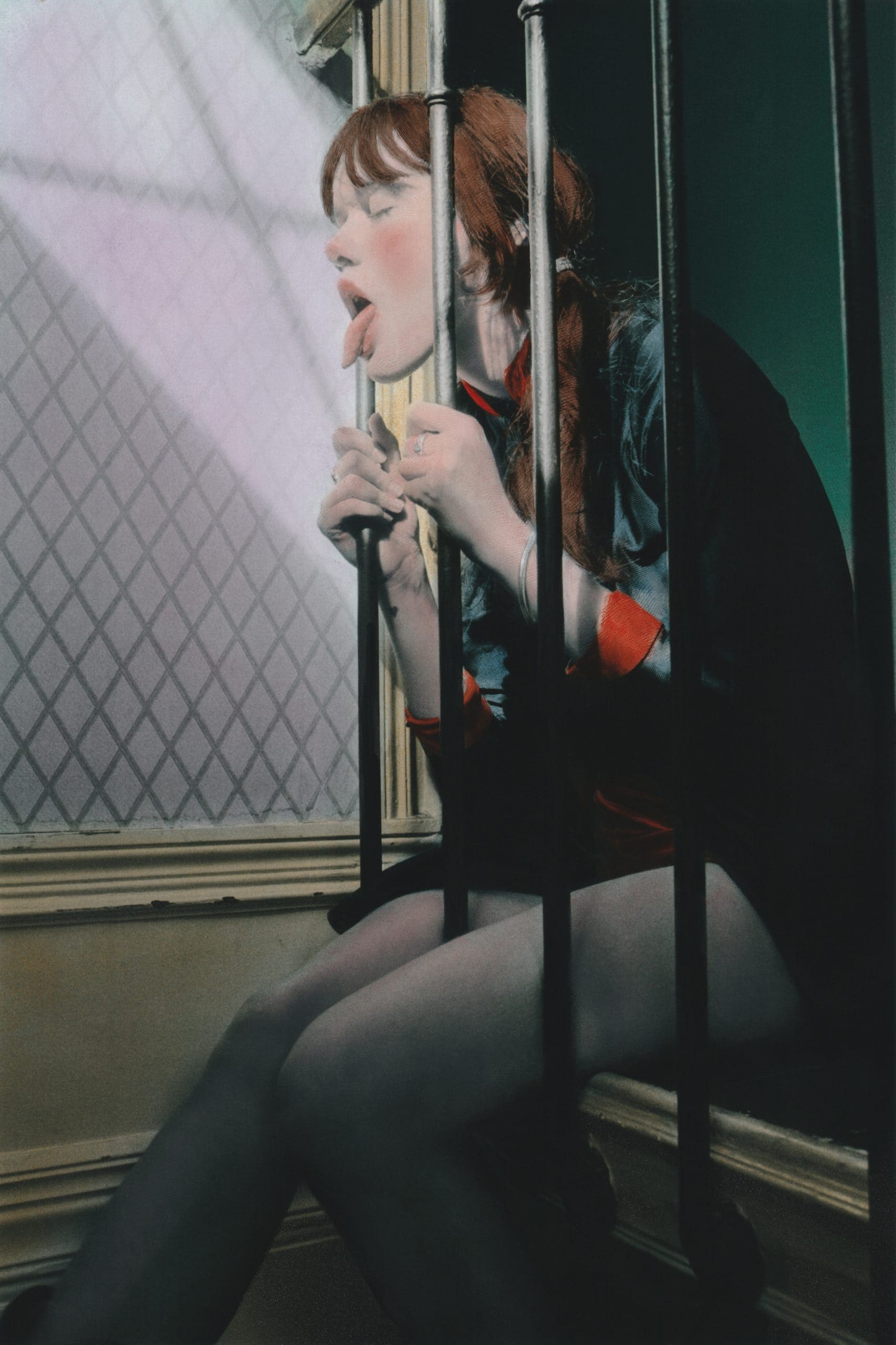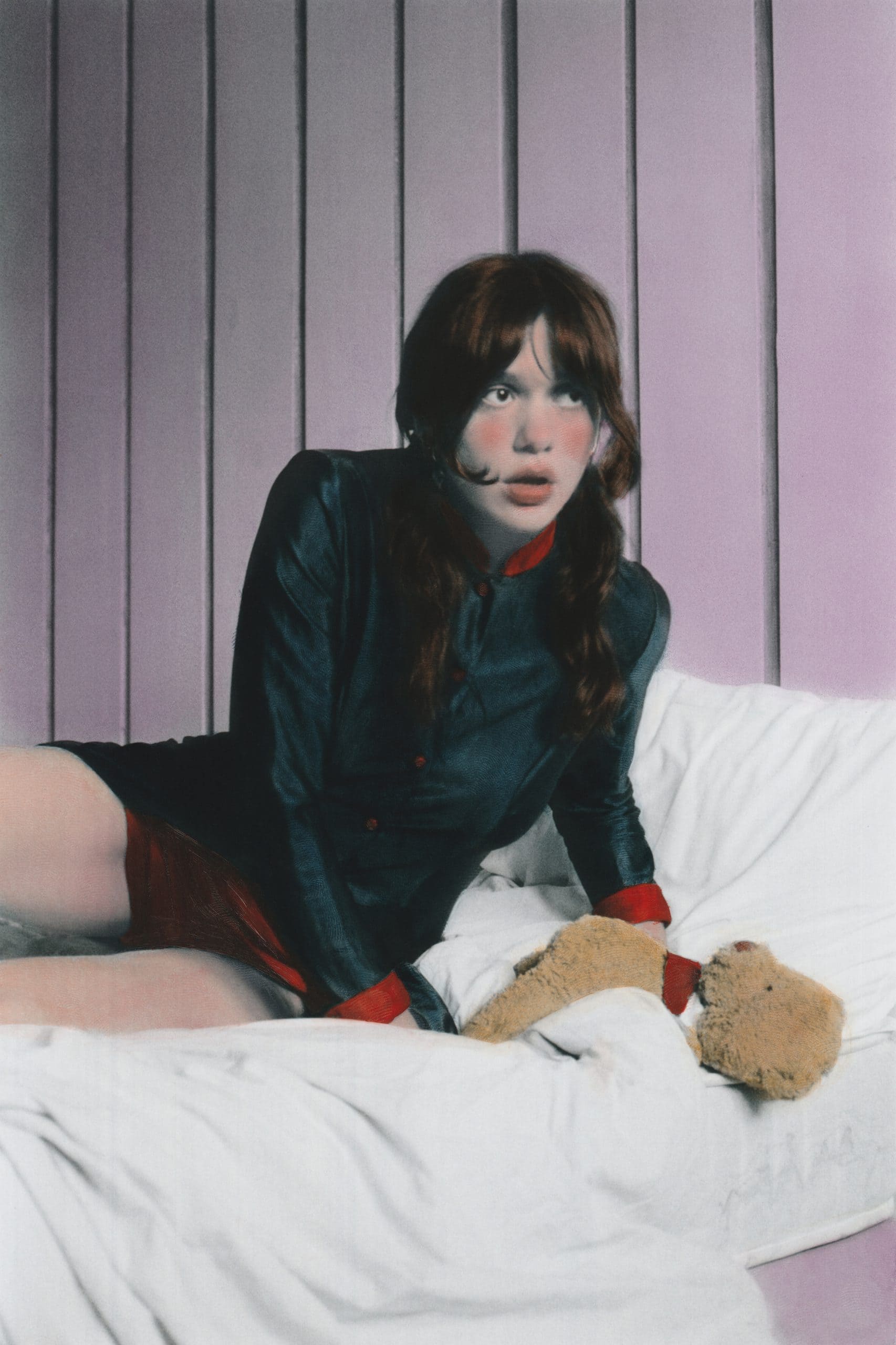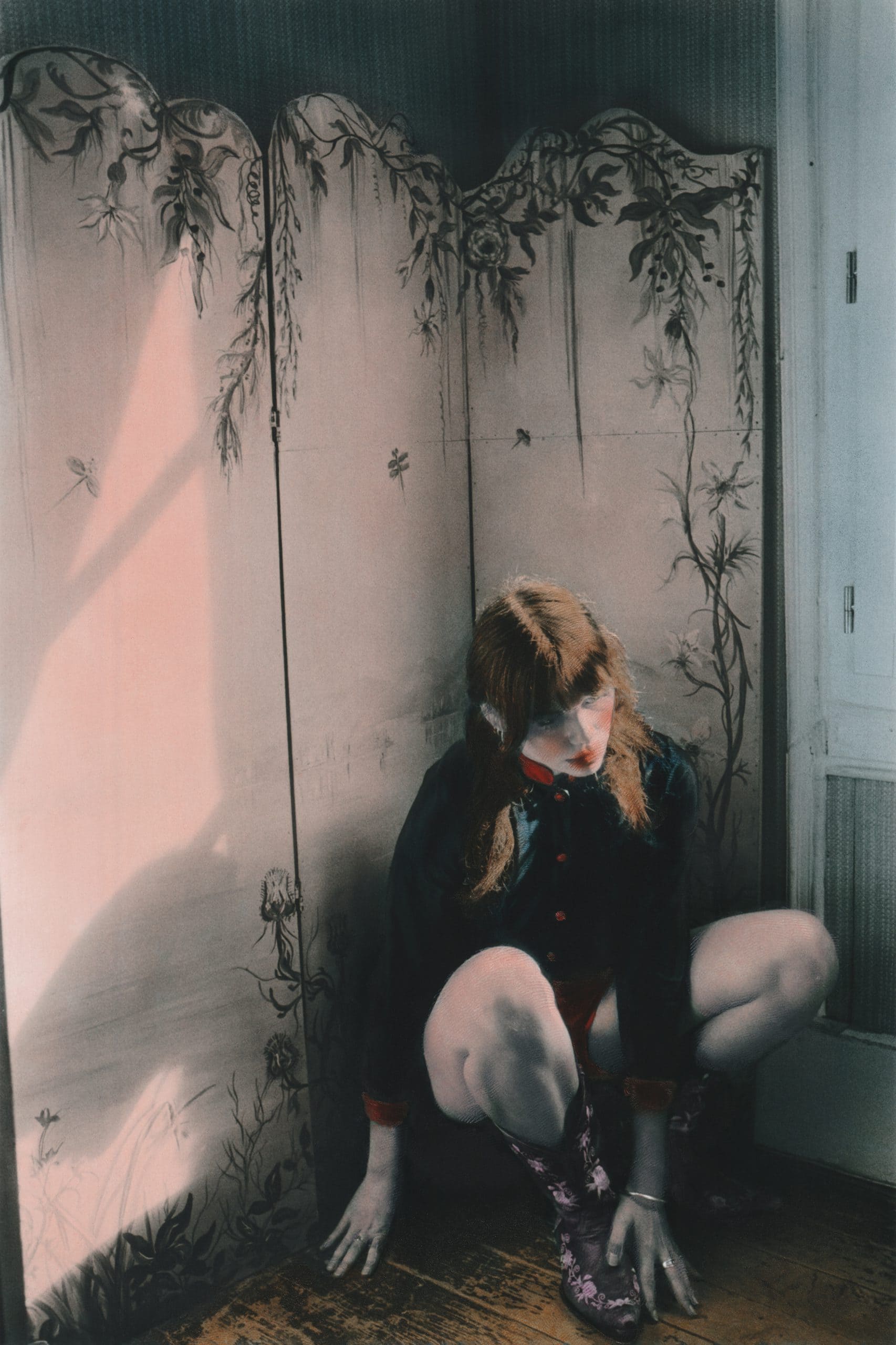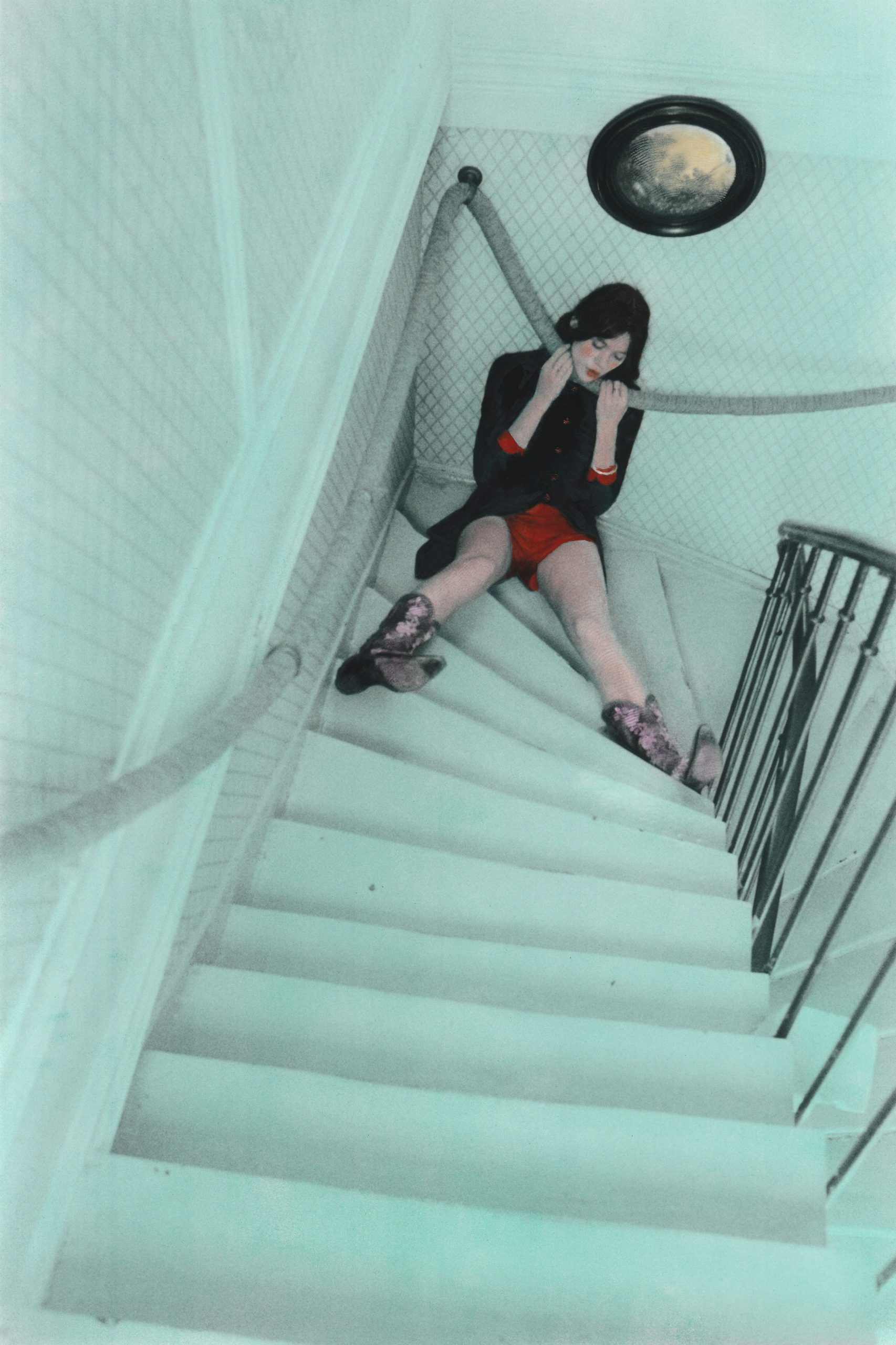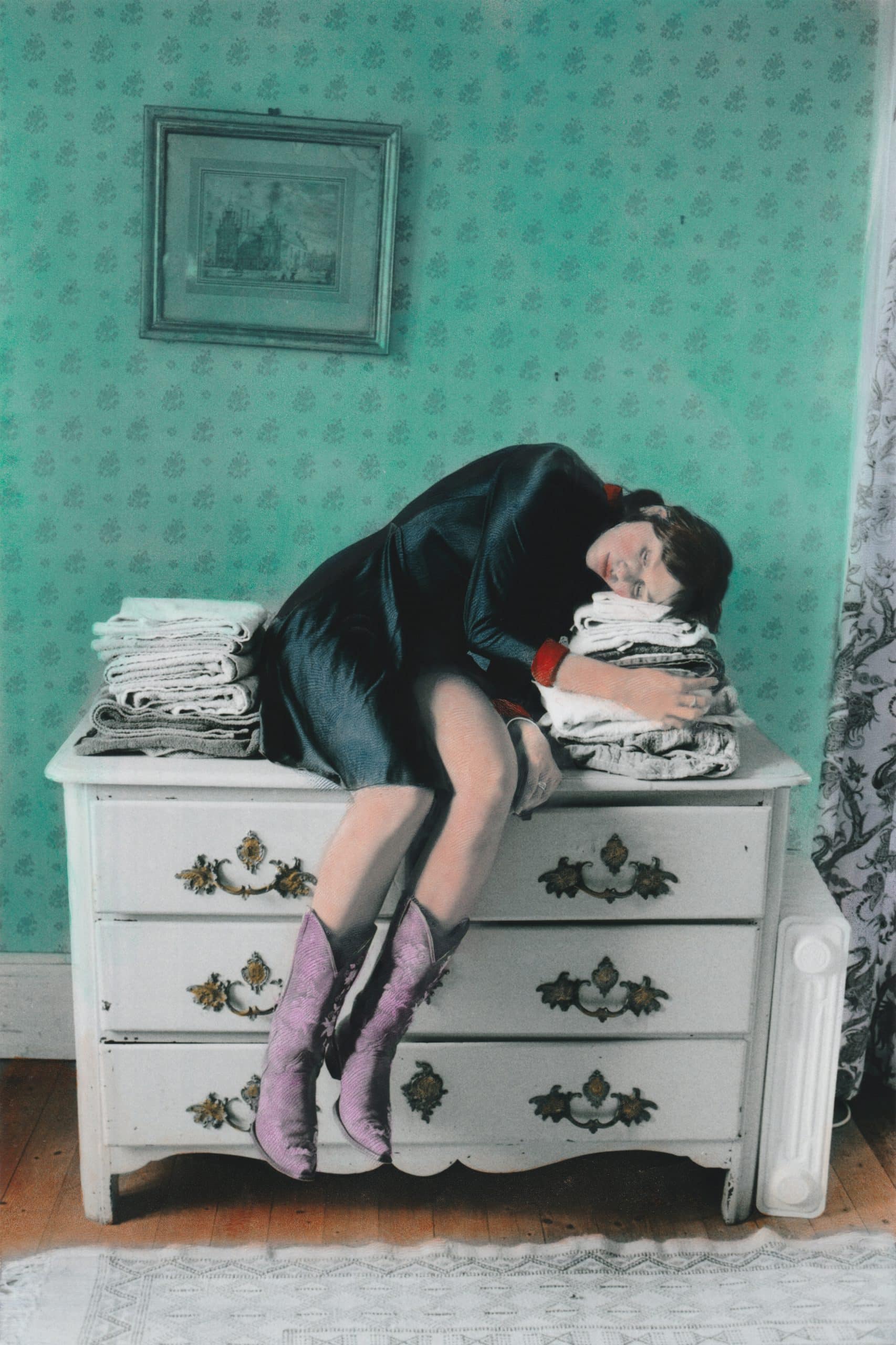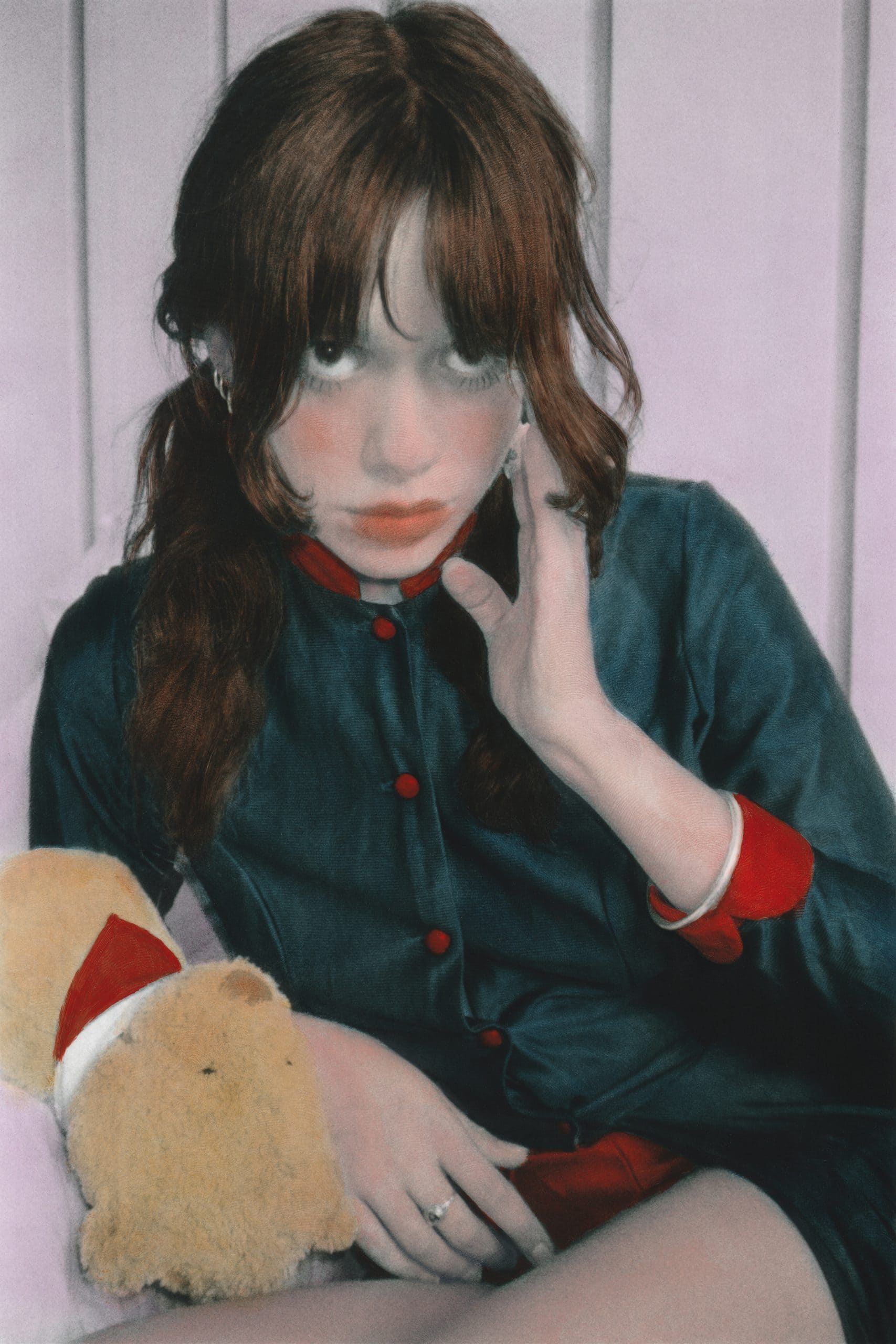Since she was a teenager, Eloïse Labarbe-Lafon liked painting with pastel colours over black-and-white analog clichés. With a keen eye for capturing the essence of moments from her life, the vibrant personalities in her creative circle, and even her facial features, Eloïse dedicates weeks to meticulously crafting her ethereal images entirely by hand. Passionate about cinema archives as much as ghost stories, Labarbe-Lafon is one of those with a profoundly playful soul. In a recent exploration of her artistic journey, the French artist shares insights into her latest series of self-portraits created during an art residency near Paris and hand-painted in Portugal.
Anna Prudhomme: Can you recall the first thing that drew you to painted photos?
Eloïse Labarbe-Lafon: My parents introduced me to art from an early age, all kinds of art. I was always encouraged to create. Then I was strongly nourished by my studies of art history at the Sorbonne in Paris. And in parallel with the development of my photographic practice, I had a passion for preserving film heritage, so I worked in various archives, such as the ones of French film director and biologist Jean Painlevé. I also restored old films and colourised wartime documentary archives. I’m really drawn to the old, to preservation and to the duty of memory. Then I recall that aged 17, I had already done a first painted series on the theme of mortuary portraits. I was greatly inspired by Japanese funeral rites— which I had discovered in Yôjirô Takita’s film Okuribito—, and had a fascination with Victorian mortuary photography. The idea was to remove the colours of life from models, who were in coffins decorated with artificial flowers, by photographing them in black and white. Then to give them a breath of life by colouring their skin, blushing their lips and cheeks, and applying bright colours to the flowers around their faces.This was my first approach to photo painting. And now it’s all I do, but on less macabre themes. [she laughs]
AP: And so today what would you say are the key themes that influence and define your artistic sensibility?
ELL: There’s no predefined theme, but I draw a lot of inspiration from transforming my everyday life. I take fragments of it that are real and turn them into some kind of tale. I want to alter reality. I shoot scenes from my life, and then try to give them the colors of my mind. In my stagings, there’s also something I like about the naive vision of children that gives me the freedom to play around. There’s also a hyper-melancholy side to my work I think, especially in the poses, but it’s not deliberately sad either. As for the characteristic red cheeks and doll-like look, I think it’s the way I like to portray my characters, just as a painter has a particular style of drawing faces. It makes my images recognizable, and gives unity to all the photos in a way.
AP: Why do you specifically opt for pastel colors?
ELL: I think pastels were a bit of a no-brainer for me as I paint with oils and I play a lot with the transparency of the paint to make the photograph visible underneath. Out of necessity, my colours have to be quite light, which has led me to use a slightly muted, dreamy palette.But what I find beautiful is how pastel colors enhance the dreamy quality of my paintings, so I just stuck with it.
AP: Can you elaborate on your technique for crafting painted images?
ELL: So, I take the photographs on black and white film, develop them, make the prints (often by myself when I have the space to set up a laboratory), and then I spend many hours painting the images with oil. Then I wait a few days for the paint to dry, scan the photos, retouch them and remove any dust that is stuck in the paint. I paint with brushes or use my fingers, searching for materiality in the photographic image. I like to leave my fingerprints on each painting. It’s like leaving a mark, but most of all it creates something unique that couldn’t be reproduced. I love the fact that you can dive into the photo and discover textural details that you wouldn’t really notice at first glance. It transforms the photographed scene into an image that seems somehow unreal and incomprehensible in its details. There’s also a very important relationship with time in my practice, which clashes with the inherent instantaneity of photography. I sometimes feel that I’m going against the grain, having chosen a photographic process that advocates slowness and cannot be accelerated. But it allows me to think differently. The moment is frozen, the process forces me to spend hours on a particular image, appreciating its immobility. In addition the materiality of the print and the paint makes it a unique object, a photo-object or a precious image which is a path I truly want to keep on investigating.
AP: When did you make your first self-portrait and what was the inspiration or process behind it?
ELL: The first one that truly had an impression on me was just a colour photo taken in the mirror after I’d cried. Then, I started taking pictures of myself every time I cried. I painted a lot of them, but that wasn’t the main idea. The effort of picking up the camera, focusing, holding my breath long enough to release the shutter, observing the absurdity of the moment, made me stop crying almost immediately. It soon became something of a ritual. For the last 5 or 6 years, I’ve been interested in staging myself. It all started from quite a practical point of view, I didn’t need to depend on a model available or opinion. Now, I can’t really say that I have a protocol, I often go out into nature with my tripod and let my instincts guide me. It’s a bit like playing a game as a child — developing yourself in a space where you disguise yourself, where you play at being someone else. When I photograph other models or a particular scene, looking through the viewfinder I already have a sort of vision of what the picture might look like with the paint colour on. When I do self-portrait, I can’t see what I’m doing, so there’s more room for chance and experimentation. But then when I see my self-portraits, I don’t see myself in the photo. It’s just a face which I cover with paint mixed in with the others.
AP: Can you walk me through the process of creating your recent series of self-portraits during your stay at an art residency in Barbizon, near Paris ?
ELL: This series was taken in the incredible house of a friend of mine during an artistic residency I was doing at Folie Barbizon. He told me to go to the house whenever I wanted, so I took my majorette dress and my tripod and had the most fascinating experience. It’s a family house that has remained the same since the 19th century. All the elements, the furniture and the objects are untouched. So I wandered around the house for 4 hours, taking pictures in every corner. All along I had this feeling that I was not alone. The walls and floors were so full of life. I was moved all the time. I didn’t really understand what I was feeling, I think I cried as I was taking the photos. I remember the tears running down my cheeks as the shutter clicked. But to my great surprise, when the film was developed, I couldn’t find any tears in the pictures. It was so strange! I love that these photos can be compared to a ghost story. Probably because I love ghost stories. Ghosts are a theme that runs through all my photographs in some way. It’s also a series that spans across time and geography, as I’m finishing it right now in the house I’m staying for a couple of months in the south of Portugal.
AP: How do you envision the evolution of your artistic practice in the coming years?
ELL: I mostly see my practice continuing to be nourished by encounters and travel. For some time now, I’ve been noticing how much I get out of photographing all over the world. I also love working with musicians and hope to continue to do so. We’re currently working on my boyfriend Ryder the Eagle’s new album, doing all the visuals and clips, which is really exciting. I also started working with stained glass a year ago as I went to a class in Mexico. I wanted to learn how to make stained glass frames for my painted photos. So there was this whole thing of trying to move my practice more and more towards the creation of objects or even precious objects. It was really this idea of being in control of every part of the final images. And that’s what I did for my exhibition Album last October in Paris at Est Galerie, I find it really interesting to mix and expand the possibilities of the mediums. So, mixing glass with photography and painting and maybe something else. I do see myself experimenting more in the future. I also have two new books in the works, because with books there’s this object quality that I love. The next book coming out this year is going to be on a series that I shot over fifty days in the United States. It’s really different from anything I’ve done before. I haven’t shown anything yet, but it’s a very painterly and intimate series of self-portraits.
